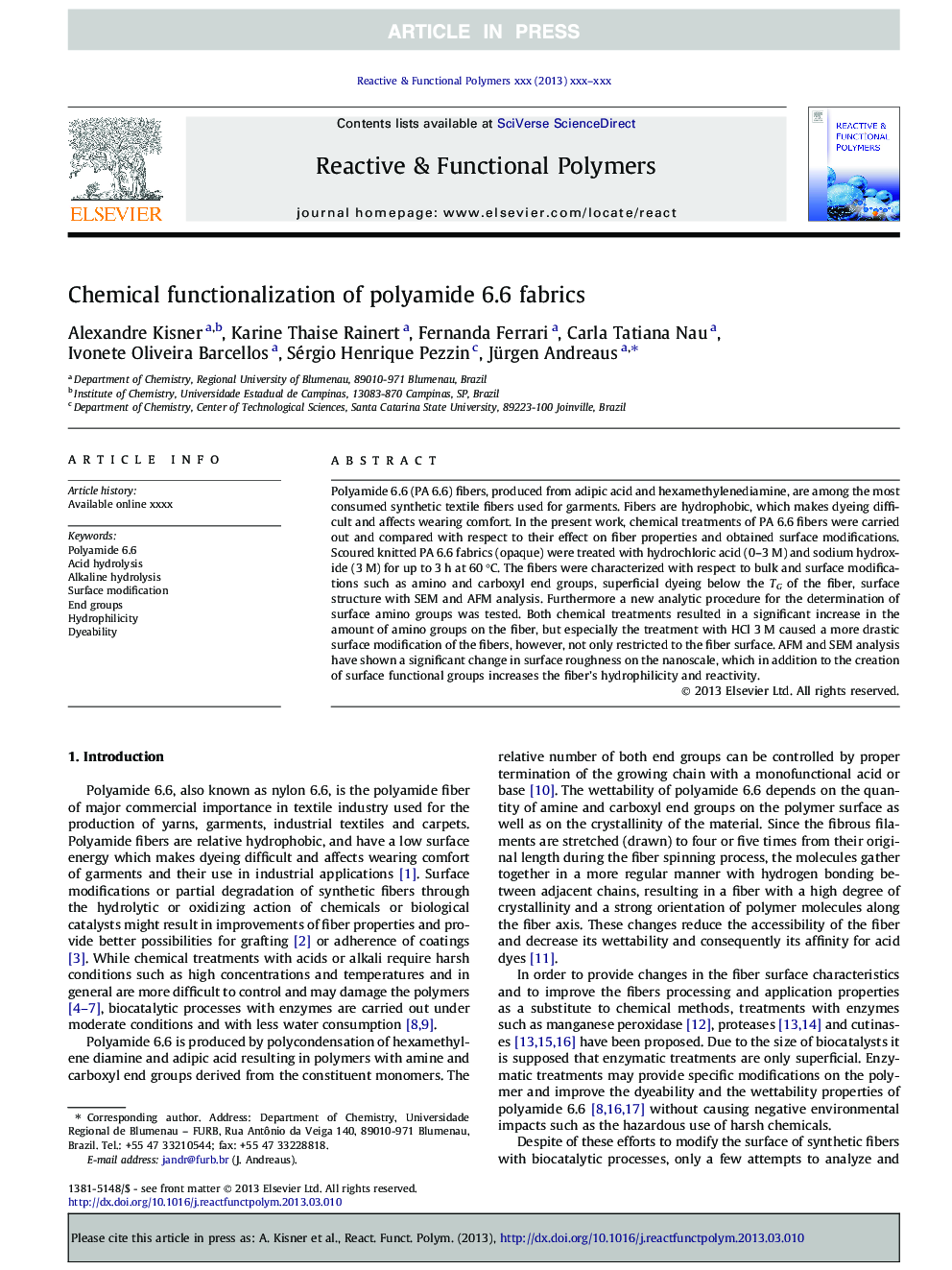| Article ID | Journal | Published Year | Pages | File Type |
|---|---|---|---|---|
| 5210077 | Reactive and Functional Polymers | 2013 | 8 Pages |
Abstract
Polyamide 6.6 (PA 6.6) fibers, produced from adipic acid and hexamethylenediamine, are among the most consumed synthetic textile fibers used for garments. Fibers are hydrophobic, which makes dyeing difficult and affects wearing comfort. In the present work, chemical treatments of PA 6.6 fibers were carried out and compared with respect to their effect on fiber properties and obtained surface modifications. Scoured knitted PA 6.6 fabrics (opaque) were treated with hydrochloric acid (0-3 M) and sodium hydroxide (3 M) for up to 3 h at 60 °C. The fibers were characterized with respect to bulk and surface modifications such as amino and carboxyl end groups, superficial dyeing below the TG of the fiber, surface structure with SEM and AFM analysis. Furthermore a new analytic procedure for the determination of surface amino groups was tested. Both chemical treatments resulted in a significant increase in the amount of amino groups on the fiber, but especially the treatment with HCl 3 M caused a more drastic surface modification of the fibers, however, not only restricted to the fiber surface. AFM and SEM analysis have shown a significant change in surface roughness on the nanoscale, which in addition to the creation of surface functional groups increases the fiber's hydrophilicity and reactivity.
Keywords
Related Topics
Physical Sciences and Engineering
Chemistry
Organic Chemistry
Authors
Alexandre Kisner, Karine Thaise Rainert, Fernanda Ferrari, Carla Tatiana Nau, Ivonete Oliveira Barcellos, Sérgio Henrique Pezzin, Jürgen Andreaus,
